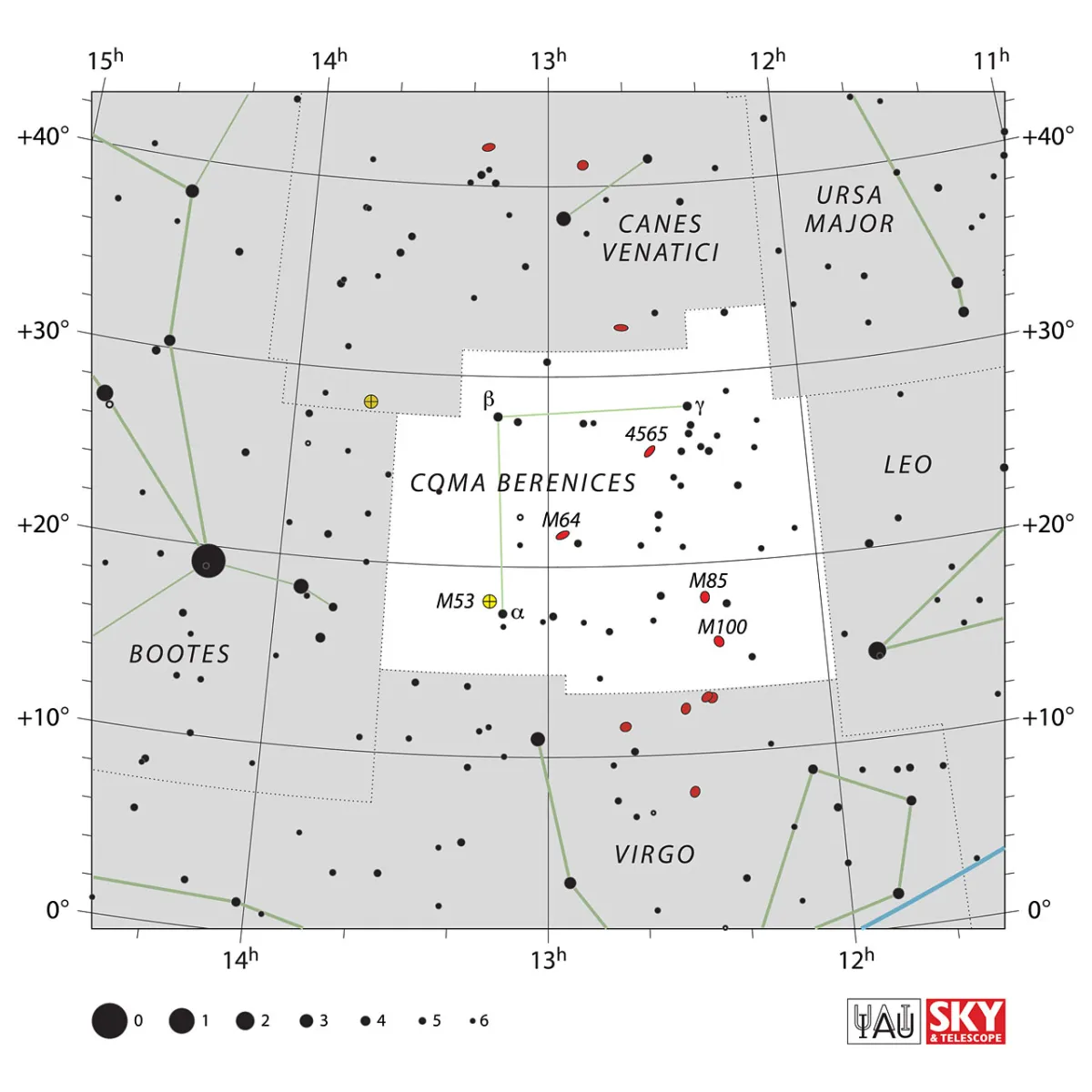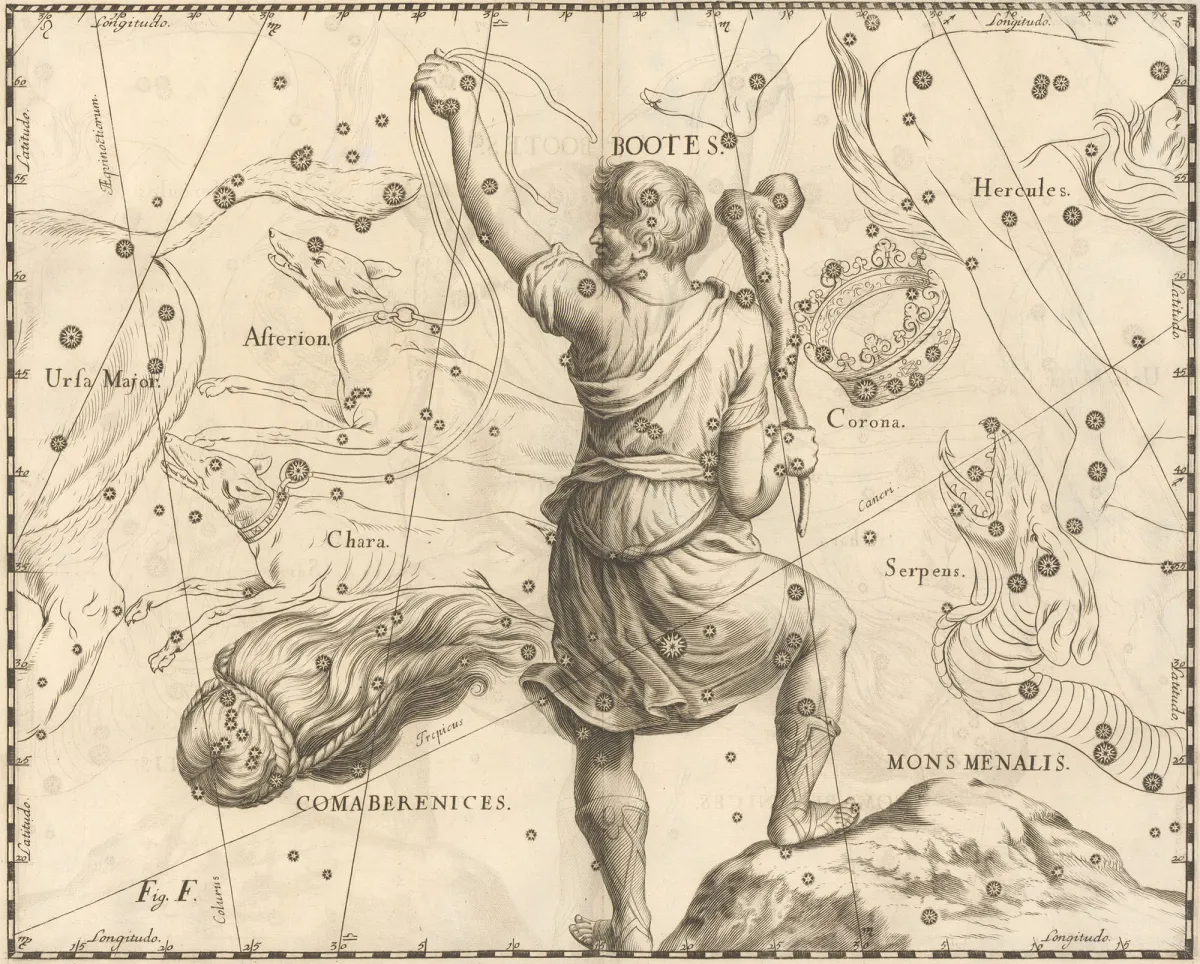Constellation Coma Berenices (Bernice's Hair)

Properties
The main part of the royal hair is formed by a loose star cluster with around 30 members, the so-called Coma star cluster (Mel 111), which is a few degrees wide and can best be seen in binoculars or in a very dark area. Coma Berenices is located west of the bright star Arcturus from the constellation Bootes. The brightest stars belong to the 5th and 6th magnitude and form a conspicuous V. The cluster, whose stars are around 250 light-years away, is close to gamma Comae, which itself, however, probably does not belong to the cluster. Above that, the constellation contains another type of cluster - a cluster of galaxies about 400 million light years away. The constellation Coma Berenices occupies a place of 386 square degrees in the sky. It culminates around midnight on April 2nd. [7, 9, 15]
| α Com | Diadem |
| IAU Name | Coma Berenices |
| IAU Genitive | Comae Berenices |
| IAU Abbr. | Com |
| English Name | Bernice's Hair |
| Culmination at local midnight | 1 April |
| Season (Latitude +0.0°) | December … September |
| Right Ascension (J2000.0) | 11h 58m 25s … 13h 36m 07s |
| Declination (J2000.0) | +13° 18' 15" … +33° 18' 27" |
| Area | 386 deg2 |
| Neighbours (N↻) | CVn, UMa, Leo, Vir, Boo |
Deep-Sky Object Descriptions
Catalogues

Mythology and History
The folklore that we know today about the constellation Coma Berenices comes from ancient Egypt. The legends tell of Queen Berenice, daughter of King Maegerse from Cyrene. She was so troubled that her husband, King Ptolemaeus Euergetes, had gone to war against the Assyrians. She vowed to sacrifice her beautiful, long, flowing hair to the god of beauty when her king came back safe and sound. The king came back and Berenice had to keep her promise. She cut her hair and placed it in a temple under the watchful eyes of the temple guards.
On a moonless night, when the whole country was shrouded in darkness, the king was seized with the urge to look at his wife's long, beautiful hair again. He went to the temple and met the temple guards. They told him that the hair had disappeared moments before. Before the king could get angry about the carelessness of the guards, they told him quickly that the gods had been so pleased with Queen Berenice's sacrifice that they gave their hair a place in the starry sky for all eternity. Then the guards pointed skyward at a beautiful, loose cluster of faint stars. The king was pleased that he could now see Berenice's hair whenever he felt like it. [89]
The legend comes from Greek times, but the constellation used to be added to either the constellation Leo or the constellation Virgo. It was not until the beginning of the 17th century, shortly before Tycho Brahe's death, that it was included in his catalog as an independent constellation. [7]